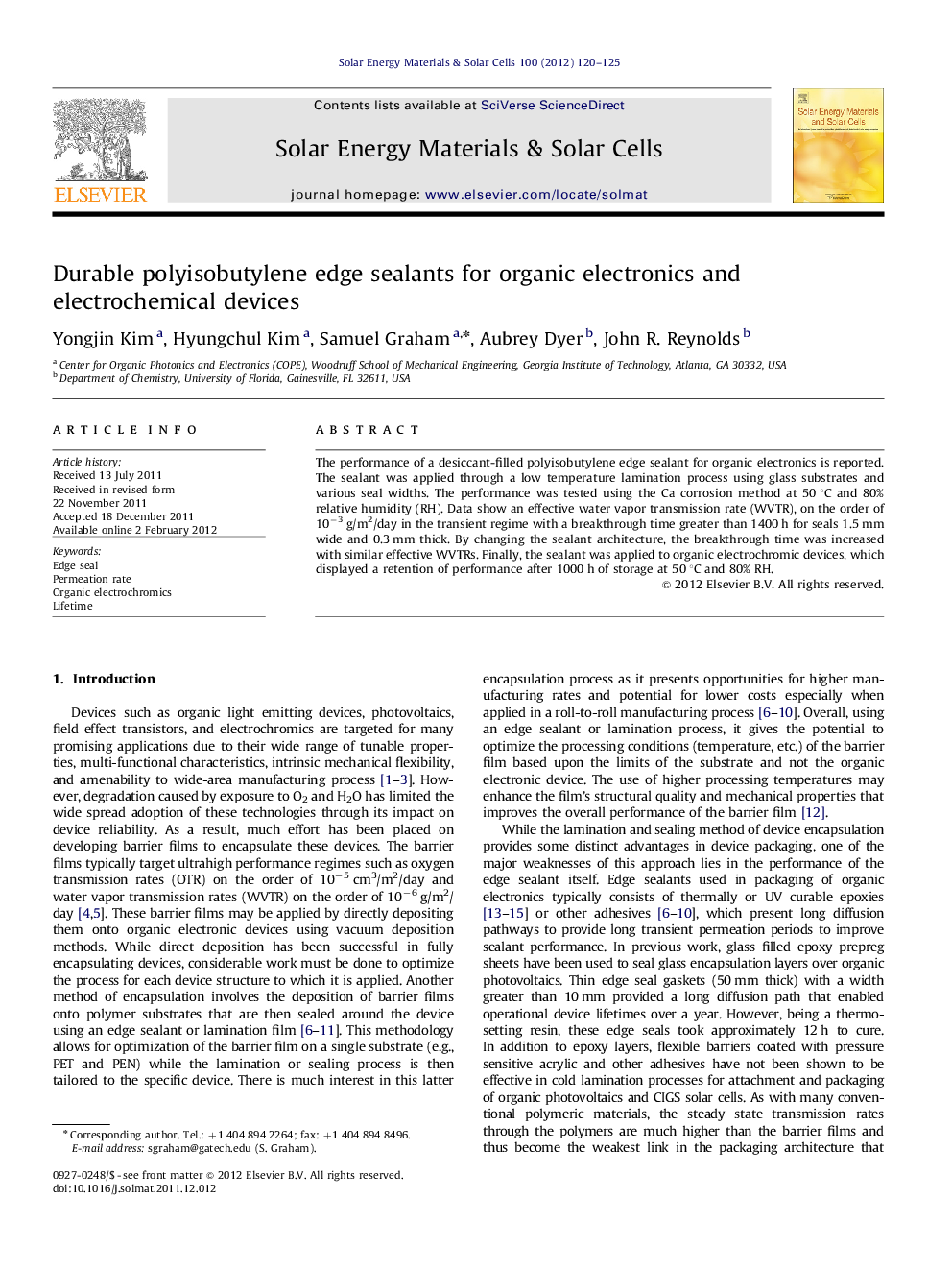| Article ID | Journal | Published Year | Pages | File Type |
|---|---|---|---|---|
| 78382 | Solar Energy Materials and Solar Cells | 2012 | 6 Pages |
The performance of a desiccant-filled polyisobutylene edge sealant for organic electronics is reported. The sealant was applied through a low temperature lamination process using glass substrates and various seal widths. The performance was tested using the Ca corrosion method at 50 °C and 80% relative humidity (RH). Data show an effective water vapor transmission rate (WVTR), on the order of 10−3 g/m2/day in the transient regime with a breakthrough time greater than 1400 h for seals 1.5 mm wide and 0.3 mm thick. By changing the sealant architecture, the breakthrough time was increased with similar effective WVTRs. Finally, the sealant was applied to organic electrochromic devices, which displayed a retention of performance after 1000 h of storage at 50 °C and 80% RH.
Graphical abstractOrganic electrochromic device sealed between two glass substrates using a desiccant filled polyisobutylene edge sealant. Samples showed little degradation in on–off optical performance after 1000 h of storage in a 50 °C/85% RH environment.Figure optionsDownload full-size imageDownload as PowerPoint slideHighlights► Polyisobutylene edge sealants possess low permeation rates for water vapor and O2. ► The edge sealants are excellent for packaging organic electronics. ► They can be applied using low temperature lamination processing. ► Electrochromic devices showed little degradation after 1000 h accelerated testing.
